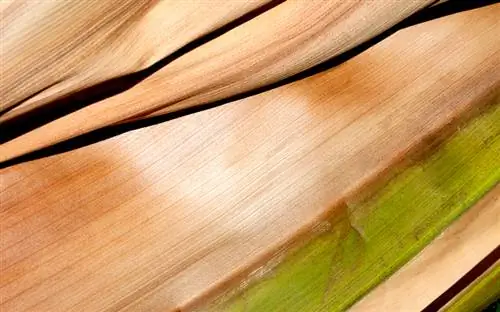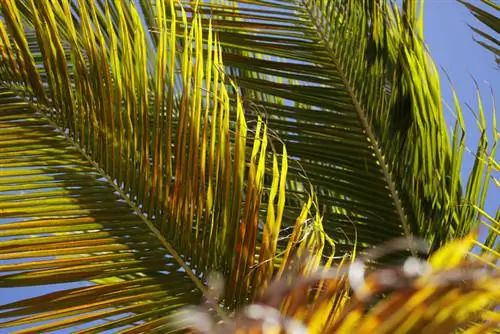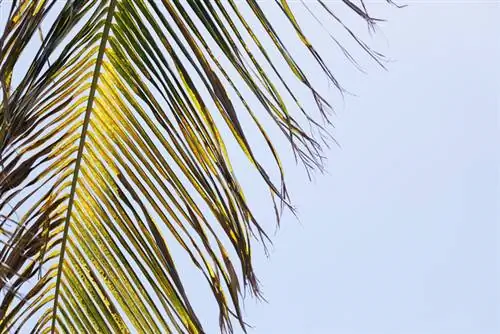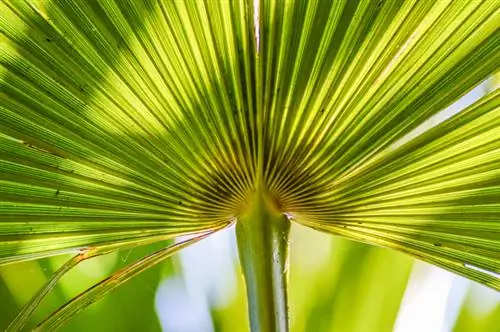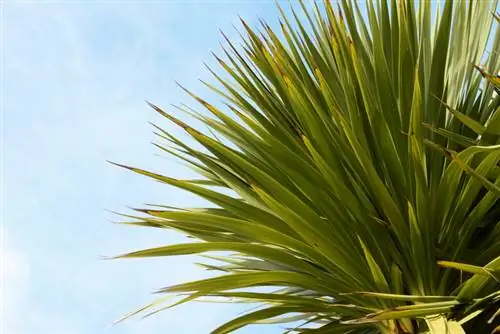- Author admin [email protected].
- Public 2023-12-16 16:46.
- Last modified 2025-01-23 11:21.
If the Kentia palm occasionally gets brown leaves, you don't have to worry. This is completely normal. You need to be careful if many leaves turn brown or become spotted. Incorrect care is almost always responsible.
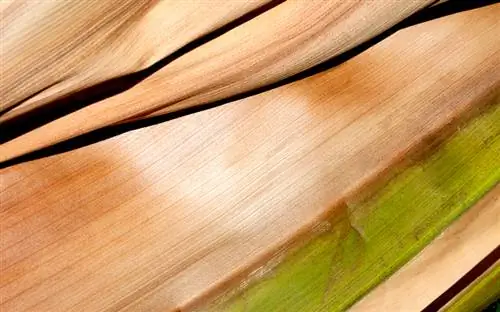
Why does my Kentia palm have brown leaves?
Brown leaves of the Kentia palm can occur due to substrate that is too moist or dry, lack of nutrients, a location that is too dark, a small pot, low humidity, temperatures that are too cool or pest infestation. Proper care, a bright location and increased spraying increase the humidity and improve your well-being.
Possible Causes of Kentia Palm Brown Leaves
- Substrate too moist / too dry
- Nutrient Deficiency
- Location too dark
- pot too small
- humidity too low
- too cool temperatures
- Pest Infestation
Water and fertilize your Kentia palm properly
The Kentia palm needs to be watered abundantly in summer without causing waterlogging. In winter, water more sparingly.
Nutrient deficiency occurs when the palm tree has not been repotted or fertilized for a long time. Fertilize them at monthly intervals.
High humidity and a lot of heat
If the humidity is too low, the Kentia palm suffers from brown leaf tips. Temperatures that are too low also cause the leaves to turn brown.
Increase humidity by misting the fronds. Find a location for the Kentia palm where it is at least 18 degrees warm. The palm tree cannot tolerate cooler temperatures.
The location should also be as bright as possible and preferably in full sun. You should only avoid direct sunlight directly behind a pane of glass.
Cut off brown leaves correctly
You can cut off the brown leaves of the Kentia palm. But wait until the leaf is completely brown and dry.
Cut the fronds with sharp and clean scissors (€14.00 on Amazon) so that a stub of three to four centimeters remains on the trunk of the palm tree.
Tip
The Kentia palm is more often attacked by pests in an unfavorable location. Low humidity is usually responsible for this.

